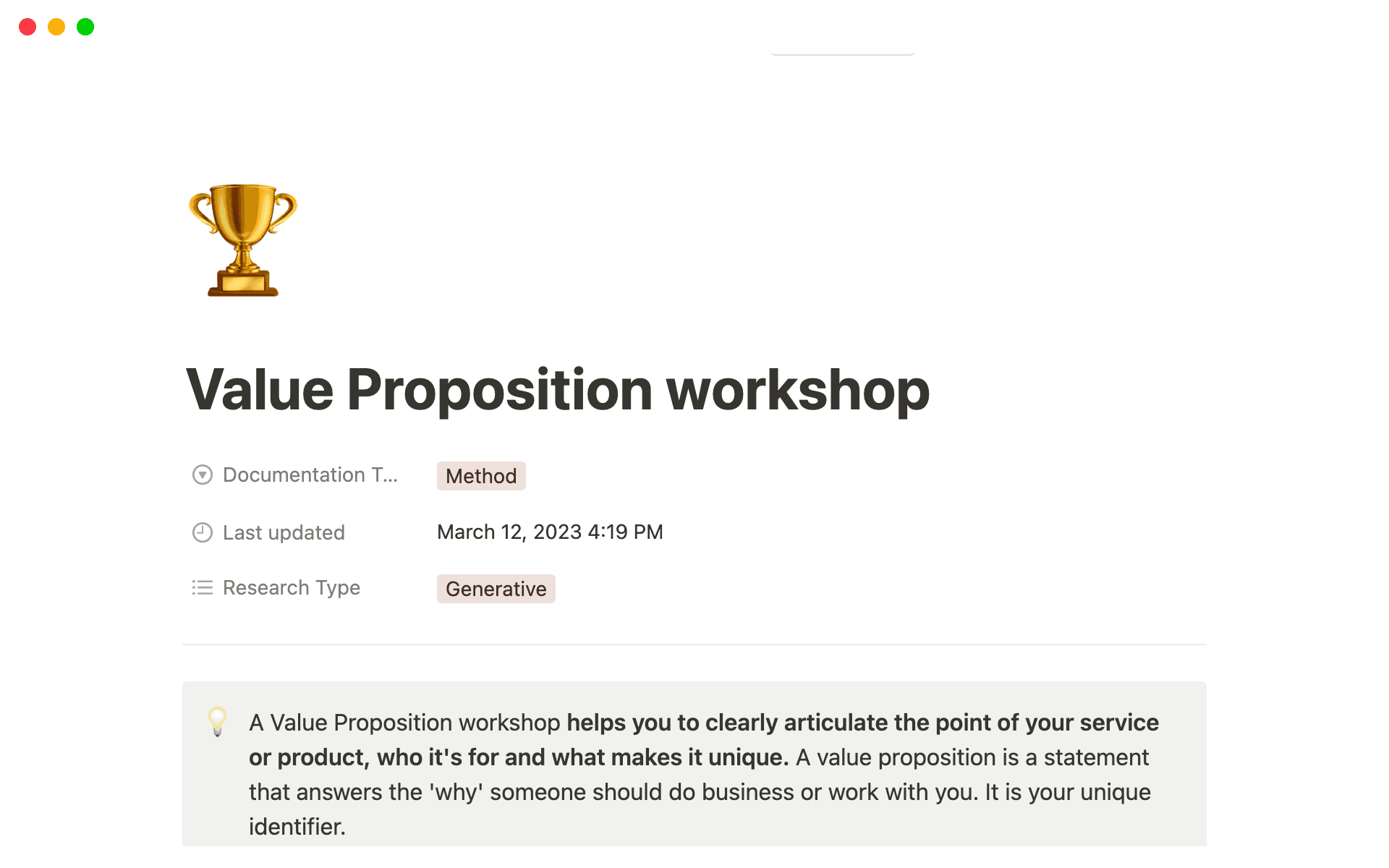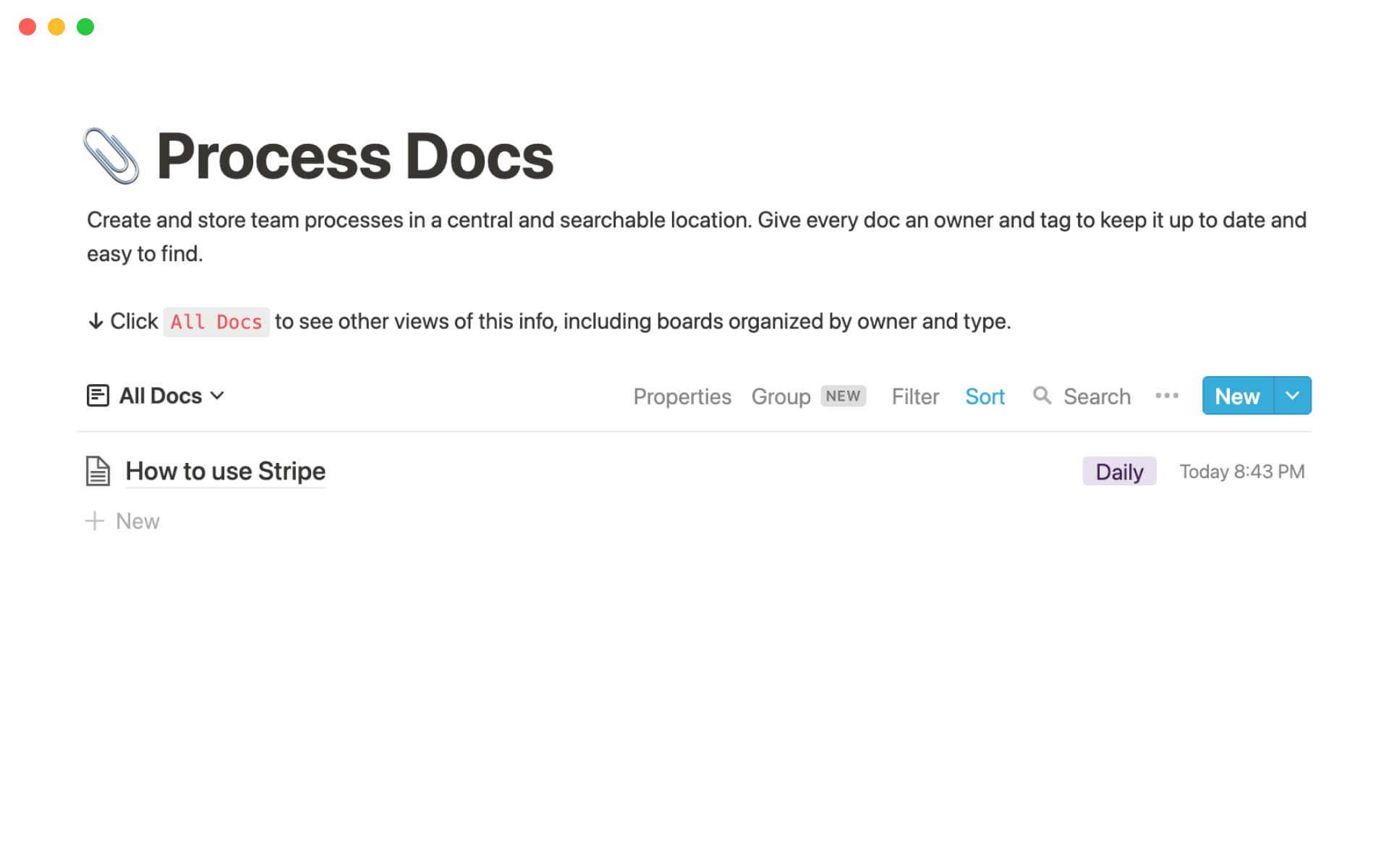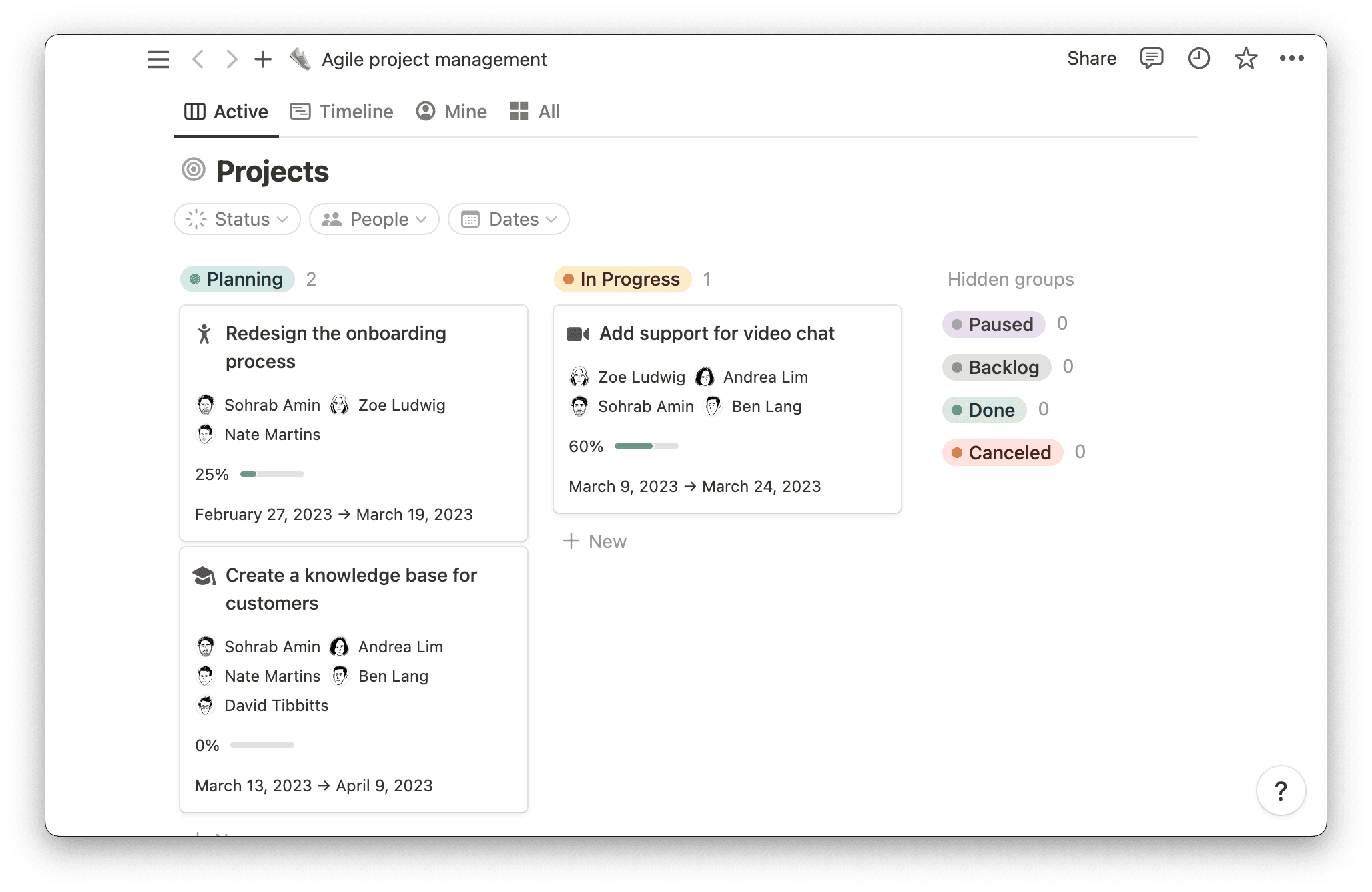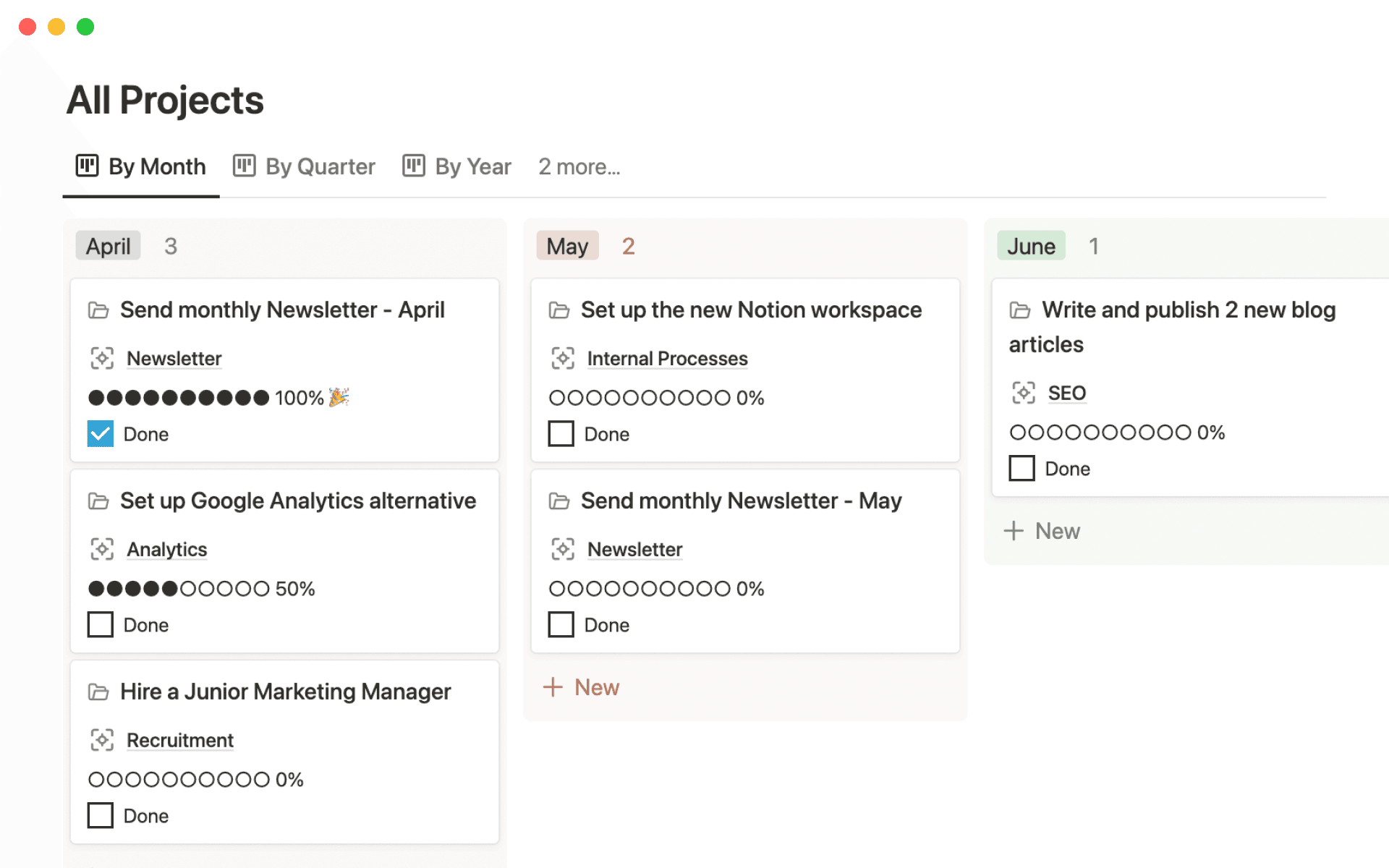Nobody likes errors or inefficiencies — not your manager, teammates, or customers. And even if you think your team runs at peak efficiency, there’s always room to improve.
Frequently auditing your workflows to better meet customer and employee expectations saves everyone the headache of spending too long on a task or waiting around for a product or service. You can use a process improvement methodology to improve and refine your workflows — you just need to find the right one.
What’s process improvement?
Process improvement is all about problem-solving — you systematically analyze and optimize each aspect of a business process. This encourages stakeholders to question the status quo and innovate, using data and insights to inform their decisions. Ultimately, you’re continually enhancing workflows to ensure the company and team remain agile and competitive.
Imagine a restaurant where staff frequently mix up orders. An improvement investigation might reveal that employees scribble and misplace order tickets. You might fix this by implementing a digital system that instantly transmits orders from the waitstaff to the kitchen, reducing errors and speeding up service. The rewards are enhanced productivity, reduced costs, and a better customer experience.
5 process improvement benefits
Using quality improvement methods to refine your team’s workflows offers priceless benefits, like:
Increased productivity — process improvement means finding smarter and quicker ways to finish tasks, so everyone can complete more in less time.
Reduced costs — by eliminating wasteful steps in a current process or ensuring you carry out a workflow correctly the first time, you save money on resources, labor, and repairs.
Improved quality — workflow improvement is all about making things better. This means the quality of your products or services increases because you've improved standards and reduced errors.
Better user experience — auditing processes also involves checking whether customer-facing workflows are smooth and efficient, like how a customer purchases your product or fills out a survey. Improving these tasks means customers enjoy a better overall experience.
Faster delivery cycles — streamlined workflows means sharing your products or services with your customers faster to stay competitive and keep everyone happy.
Process improvement versus business process management
Process improvement and business process management both focus on improving business operations to increase overall efficiency by finding and fixing problems. But there are some important differentiators here, like:

9 types of process improvement methodologies
All process improvement methodologies help you dissect current business practices to identify the areas slowing you down and build practical solutions for removing inefficiencies.
But your team’s unique needs will determine the right continuous improvement methodology for you. Whether you aim to boost employee productivity, reduce manufacturing expenses, or enhance automated system efficiency, understanding these nine popular process improvement techniques will help you choose the best option.
1. Six Sigma
The Six Sigma methodology focuses on data analysis to crack down on errors in business processes. The central aim is to achieve a near-perfect quality level — 3.4 errors per million opportunities.
Maybe your delivery workflow is too long and packages are arriving late. Six Sigma identifies the "usual suspects" — causes of these delays — and offers tools and strategies to eliminate them. This way your deliveries arrive on time, keeping customers happy.
Six Sigma uses the DMAIC acronym to identify individual optimization steps:
Define the opportunity for improvement
Measure the performance of existing processes
Analyze the problematic process to find inefficiencies and root causes
Improve by correcting root-cause issues
Control all processes and assess ongoing performance to address issues
This methodology often uses an Ishikawa — or fishbone — diagram to visualize root cause effects. Ishikawa diagrams identify potential issues and defects that might lead to the root cause.
2. Lean manufacturing
Lean involves analyzing each phase of a business process and eliminating waste from every step. If you're making more products than you can sell, for example, Lean helps you identify why and fix that overproduction so you produce just the right amount, thus saving resources.
This method involves the following five steps to achieve peak process efficiency:
Identifying value — understand the value of your product or service to your customers and how that affects your process.
Value stream mapping — compare the current workflow to your ideal one, a workflow that better addresses your product or service’s value.
Creating flow — rework your process plan according to your value stream mapping.
Establishing pull — in each workflow stage, pull work from the previous stage. If a developer finishes a code section, leaves it in the repository, and flags it as complete, a member of the test team retrieves — or “pulls” — the code for testing.
Continuously improving — iterate on the above principles, reassessing value and mapping value streams accordingly.
3. Lean Six Sigma
Consider Lean Six Sigma as a superhero duo, combining the strengths of Lean and Six Sigma: efficiency and an emphasis on reducing errors. For instance, it can help a restaurant reduce waste (Lean) and improve meal consistency (Six Sigma), boosting profits and customer satisfaction.
4. Plan-Do-Check-Act (PDCA) cycle
Imagine PDCA as a recipe for improvement:
Plan a change
Do (or implement) it
Check the results
If it works, act by making it a regular part of your process
If not, start the cycle again
5. Total quality management (TQM)
TQM is like a team sport where everyone plays a part in improving quality. From top management to front-line employees, the entire team focuses on customer satisfaction. If customers complain about a product feature, for instance, the whole team works to improve it, keeping customers loyal to your brand.

You could think of this method as a workplace philosophy that stresses high quality. Everyone knows to watch out for inefficient processes and bring innovative solutions to the table.
6. Kaizen (continuous improvement)
Kaizen is like a daily workout for your business, building strength over time. The Japanese concept of kaizen — or continuous improvement — perfectly fits process improvement. When you’re continuously improving, your business can succeed and grow.
Kaizen focuses on three types of process inefficiencies:
Muda (wastefulness) — processes that consume resources but don’t add value
Mura (inconsistency) — disjointed workflows that cause inefficiencies
Muri (excessiveness) — overuse of resources, such as worn-out machinery or overworked employees
Kaizen encourages frequent and iterative adjustments based on the concept that there’s always room for improvement. So a warehouse team might find a slightly faster route to pick items, shaving seconds off each order, which adds up to hours over a week.
7. The Five “Why?”s analysis
This method involves continually asking "Why?" to reach a problem’s root cause. You start with a question about a broad, high-impact issue. Each follow-up question aims to narrow down a root cause. Eventually, after about five questions or so, the answer to the question is the root cause. Here’s an example:
Why is the defect rate high? Many products aren’t meeting size specifications
Why aren't they meeting size specifications? The cutting tool isn’t accurate
Why is the cutting tool not accurate? It's worn out
Why is it worn out? It hasn't been replaced in a long time
Why hasn't it been replaced? There's no regular maintenance schedule
If a machine keeps breaking down, you ask "Why?" until you find the underlying issue, such as poor maintenance, and then fix it to prevent future breakdowns.
8. Theory of constraints (TOC)
TOC is like a bottleneck detector, focusing on a process’s slowest step. If orders back up in packaging, you improve that step to speed up the whole process, getting products to customers faster.
9. Kanban
You can think of the Kanban method as your process's traffic controller. It uses visual cards on Kanban boards — physical or digital — to track work as it moves through stages. If a software team has too many bugs to fix, a Kanban board showcases how you can manage the workload to prevent overwhelm and ensure employees complete essential tasks.
Start improving processes right away with Notion
Increased efficiency is right around the corner. With the appropriate process improvement methodology, you can realign your team and improve your workflows to enjoy the benefits of continuous improvement.
Enjoy immediate workflow improvements by bringing your team into a connected workspace. Notion offers customizable templates and databases everyone can easily access and refine. Get started today.





